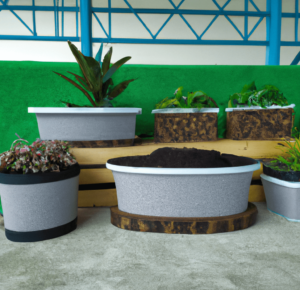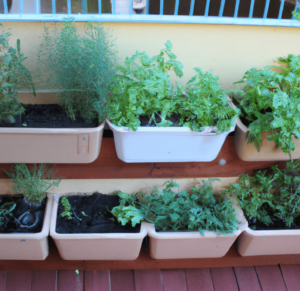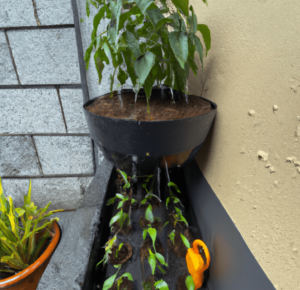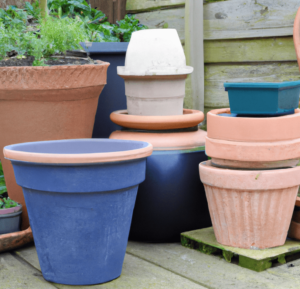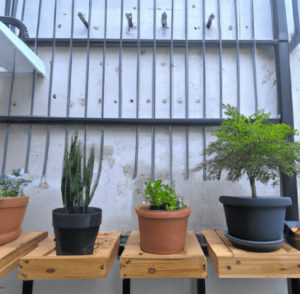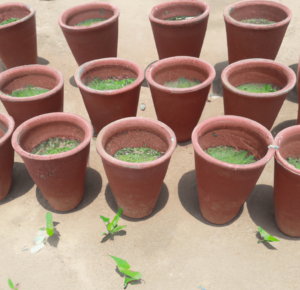A beautiful pastime that can be both calming and gratifying is gardening. Watching your plants flourish, whether you have a tiny balcony or a sizable lawn, is immensely gratifying. However, choosing the right planters for your garden is one of the most crucial decisions you will have to make as a gardener. Knowing where to begin can be intimidating due to the abundance of alternatives. Here’s our ultimate gardening guide to make sure you make the right choice!
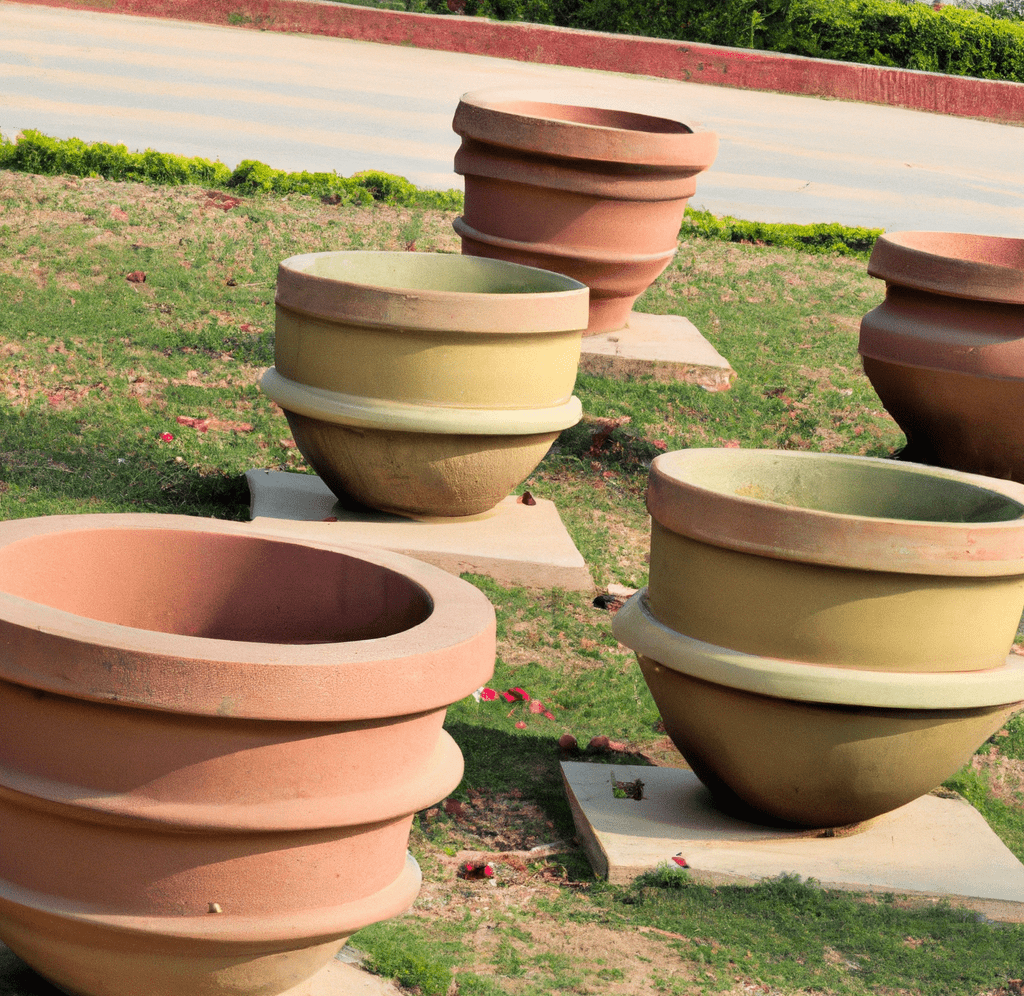
Factors to Consider When Choosing Planters
When choosing the right planters for your garden, there are different factors to consider:
- Depending on the type of plant, different types have different needs for water, light, and soil. When selecting a planter, take into account the unique requirements of your plants.
- You can choose a planter that matches your decor or the color of your plants by choosing one from the wide range of colors and finishes available.
- Terra Cotta, plastic, or metal are just a few examples of materials that can be used to make planters. Because it permits air and water to circulate, terra cotta is a popular choice for growing healthy plants.
- For optimal plant growth, proper drainage is crucial. To let the excess water drain, look for planters with holes in the bottom or those that can be drilled. Think about using a tray or saucer to collect extra water.
You may choose the best planters to give your plants a healthy and attractive habitat by taking these criteria into account. For instance, you may want to make sure you’re getting all of the benefits of using planters for flower gardens and choosing the right ones!
Size and Shape of the Planter
When choosing the right planters for your garden, size, and design are crucial considerations when selecting the ideal planter. Making the appropriate option is crucial since the size and design of your planter can have a big impact on the health of your plants and determine whether or not you’ll reap the benefits of using planters in your garden.
- Your choice of planter’s size will be influenced by the size of your plants and the quantity of soil they require. You might be able to use a compact planter for tiny plants, but a larger planter will be necessary to accommodate the roots of larger plants.
- Your choice of planter form might also have an impact on the health of your plants. Plants with symmetrical growth patterns do best in round or square planters, whereas those with more vertical growth patterns do best in rectangular or cylindrical planters.
- The material of the planter is equally significant in size and shape. Plastic, metal, and ceramic are just a few of the materials that can be used to create planters. Although plastic planters are portable and lightweight, they could not endure as long as other materials. Although more enduring, metal and ceramic planters could be more challenging to relocate if needed.
- It’s crucial to take your intended type of soil and the plant’s water requirements into account when selecting the best planter. To avoid it toppling over, for instance, if you’re using heavy soil, you might want to pick a planter with solid sides. To avoid waterlogging while using light soil, you might want to pick a planter with good drainage.
Material of the Planter
In the end, the material you choose for your planter will depend on your own requirements and the plants you are growing. When choosing the right planters for your garden, take into account the needs of your plants as well as the look you want to achieve in your garden and make your decision on the material:
- For many gardeners, wooden planters are a popular option. They are beautiful, durable, and made of natural materials, but if they are not properly sealed or handled, they can decay over time. Some gardeners may find this to be an issue because they are also vulnerable to pest damage.
- Metal planters come in a variety of designs and finishes, and they are strong. The heat generated by metal pots in direct sunshine, however, may be damaging to your plants. Additionally, they cost more than other materials.
- Ceramic planters look good and are available in many different designs and hues. They can be brittle and break if dropped, yet they can also be rather sturdy. Additionally more expensive than other materials are ceramic planters.
- Because they are lightweight and inexpensive, plastic planters are a preferred option for many gardeners. They come in a variety of designs and hues as well, although they are not as long-lasting as other materials and may shatter or fade with time.
- A more recent choice that combines the advantages of plastic and metal planters is fiberglass planters. They come in a range of designs and colors and are strong and lightweight. Plastic planters are less expensive, but fiberglass planters are more expensive.
Before making a decision on planters, it’s crucial to do your study because some materials are better suited to particular situations.
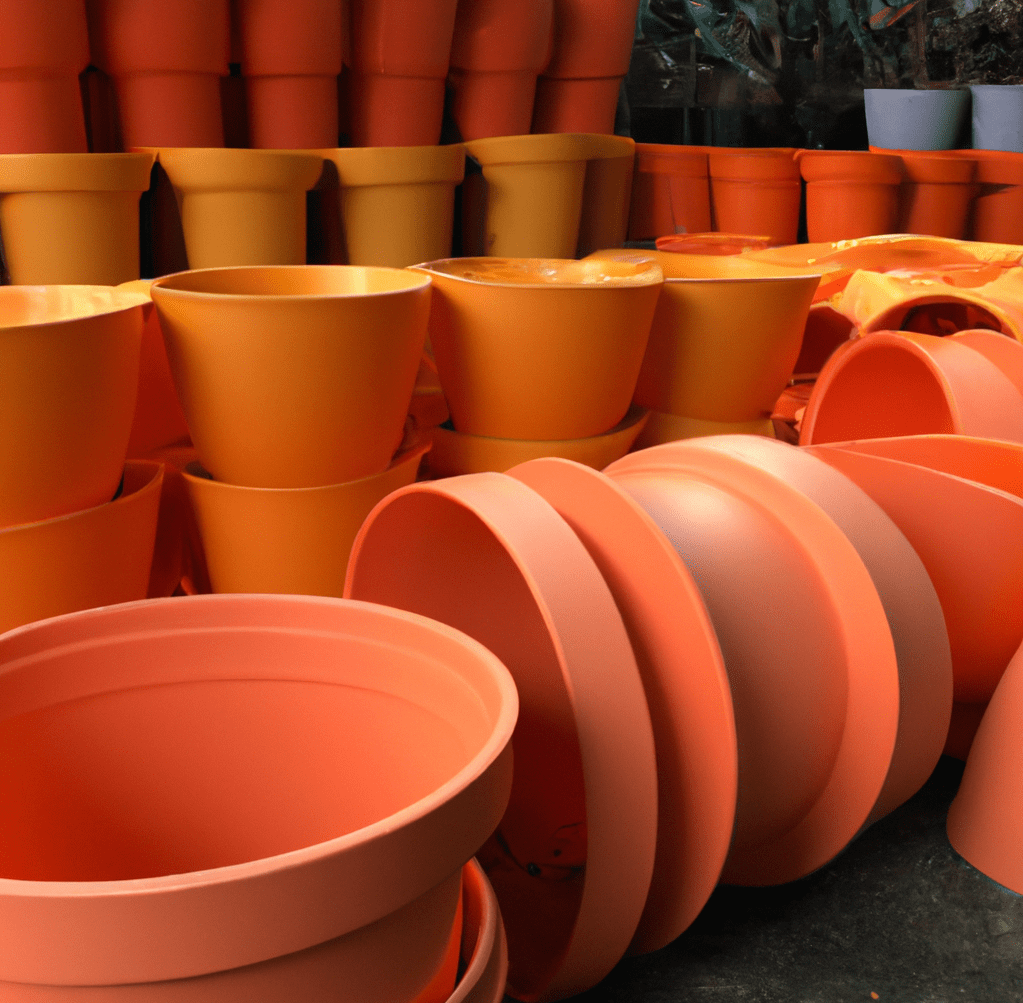
Drainage and Aeration
As you’re choosing the right planters for your garden, drainage, and aeration are essential variables to take into account. Waterlogged roots can result in root rot and other issues, which can be avoided with proper drainage. By allowing air to move around the roots, aeration gives them the oxygen they require to grow and thrive.
Here’s how to make sure a planter has adequate drainage and aeration:
- Pick the correct planter material: Wooden planters typically don’t drain or aerate as well as planters made of materials like Terra Cotta or plastic.
- Add a layer of gravel or rocks at the bottom: By providing a place for excess water to go, adding a layer of gravel or rocks to the bottom of your planter can aid in drainage.
- Use a potting mix: Use a potting mix created especially for container gardens when adding soil to your planter. Compared to garden soil, this type of soil is lighter and has superior drainage.
- Give your plants the right winter care: If you live somewhere with chilly winters, you might want to think about protecting your plants from freezing. This may entail shifting them to a protected area or covering the roots’ roots in mulch or other things to insulate them.
Cost
Cost should be taken into account while choosing the right planters for your garden. Finding a balance between cost, durability, utility, and aesthetics is crucial because planters can cost anywhere from a few dollars to hundreds of dollars.
You can discover a reasonably priced choice if you’re seeking for a little planter to house only one plant. However, the price can be significantly greater if you need a huge planter to contain several different plants. Remember that the size, kind of material, and color of a planter will all affect its price:
- The cost may also vary depending on the planter’s material. Metal and ceramic planters might be more expensive, whereas plastic planters are often the least expensive. Depending on the type of wood used, the cost of wooden planters can vary, with certain types of wood being more expensive than others.
- It’s crucial to think about the size of the planter and how much soil your plants need in addition to the cost. Your plants will be able to grow and thrive in a larger planter, but it will cost more than a smaller planter. Choosing the proper planter size also requires taking into account the root systems of your plants.
- The price can also vary depending on the color and design of the planter. You might have to pay more money to get what you want if you’re seeking a particular color or style.
Costs associated with soil, fertilizer, and plants must also be taken into account. It’s crucial to strike a balance between cost, durability, practicality, and aesthetics when selecting the ideal planter for your garden.
Types of Planters
When choosing the right planters for your garden, you’ll need to pick from the following types:
- Hanging planters: Because they are suspended above the ground, hanging planters are perfect for plants that don’t need a lot of root space. Freeing up the ground area and enhancing your garden’s aesthetic appeal are benefits. The requirement for appropriate support and the challenge of reaching the plants for maintenance are drawbacks.
- Raised beds: Ideal for plants that prefer drained soil, raised beds are elevated above the ground. Benefits include better drainage, less compacted soil, and simpler access to the plants for upkeep. The expense of the materials and the requirement for adequate support are drawbacks.
- Ground-level planters: These are good for plants that don’t need a lot of root space because they are set directly on the ground. Benefits include straightforward maintenance access and seamless blending with the surrounding environment. The possibility of soil compaction and the requirement for appropriate drainage are disadvantages.
- Planters that water themselves: Self-watering planters are made to store water and release it when necessary, minimizing the frequency of watering. The benefits include shorter watering intervals and better plant health as a result of constant moisture levels. The cost of the planters and the risk of overwatering are drawbacks.
Maintenance and Upkeep
Now that you’re done choosing the right planters for your garden, you’ll need to do some maintenance from time to time:
- Watering: Watering plants correctly is essential for their health. Water your plants frequently and watch out for overwatering, which can cause root rot. If you have trouble keeping up with frequent watering, think about adopting self-watering pots.
- Soil: Your planter’s soil has to be regularly moist, but not soggy. Consider adding compost or other organic matter to your planter’s soil if it’s heavy or compacted to help the soil’s structure.
- Diseases and pests: Check your plants frequently for symptoms of illness and pests. If there are any problems, take immediate action to stop them from getting worse.
- Winter preparation: If you live somewhere with chilly winters, you might want to think about taking precautions to prevent your plants from freezing. This may entail shifting them to a protected area or covering the roots’ roots in mulch or other things to insulate them.
You can ensure that your planters and plants are healthy and flourishing for many years by adhering to these recommendations. Ask a gardening professional for advice if you run into any problems.
Bottom Line: Choosing the Right Planters for Your Garden
The material of the planter, drainage, and aeration, varieties of planters, and maintenance and upkeep are just part of choosing the right planters for your garden. There is a planter out there that is ideal for your plants and garden, whether you prefer wooden planters, terra cotta, concrete, or other materials. To determine which plants and pots are best for your garden, we invite you to explore different suppliers and manufacturers before making up your mind.
FAQs on Choosing the Right Planters for Your Garden
Why is choosing the right planters for your garden important?
In gardening, selecting the appropriate planters is essential because it can affect the development and health of your plants. Making the appropriate decision is crucial since planters serve as a habitat for plants and have an impact on their access to air, water, soil, and light.
What elements should I take into account when selecting planters for my garden?
The appearance you want to achieve in your garden, the size and form of the planter based on the size of your plants and their growth patterns, the material of the planter, and drainage. The specific requirements of your plants, such as their needs for water, light, and soil.
What effect do size and shape have on the well-being of my plants?
The health of your plants can be considerably impacted by the size and design of your planter. Your planter’s dimensions and form should accommodate the roots of your plants and correspond to their growth cycles. Planters that are round or square, for instance, are appropriate for plants with symmetrical development patterns, whereas rectangular or cylindrical planters are best for plants with more vertical growth patterns.
What are the benefits and drawbacks of various planter materials?
- Wooden planters are attractive, strong, and composed of natural materials, but if they are not maintained or sealed properly, they can deteriorate over time and are susceptible to pest damage.
- Metal planters are sturdy and available in a wide range of styles and finishes, but they can heat up in intense sunlight and could harm your plants. Additionally, they cost more than other materials.
- Ceramic planters are attractive and come in a variety of styles and colors, but they can be fragile and break if dropped. Additionally, they cost more than other materials.
- Although plastic planters are lightweight and affordable, they are not as durable as other materials and may break or fade with time.
- A more contemporary option that combines the benefits of plastic and metal planters is fiberglass planters. They are stronger than plastic planters but more expensive. They are also lightweight and have a variety of patterns and colors.
How can I make sure my planter has adequate drainage and aeration?
- Pick the right material for your planter. For instance, terra cotta planters are a popular choice for healthy plant growth since they allow air and water to circulate.
- To let the excess water drain, look for planters with holes in the bottom or those that can be drilled.
- To catch any extra water, use a tray or saucer.
- When choosing the best planter, keep in mind the type of soil that will be used and how much water the plant needs. For instance, you might want to choose a planter with sturdy sides if you’re using heavy soil, and you might want to choose a planter with adequate drainage if you’re using light soil.
How do I choose the best planters for my garden?
When choosing the right planters for your garden, consider the requirements of your plants, the appearance you want to create, and the size, and shape of the planter when choosing the best planters for your garden.


